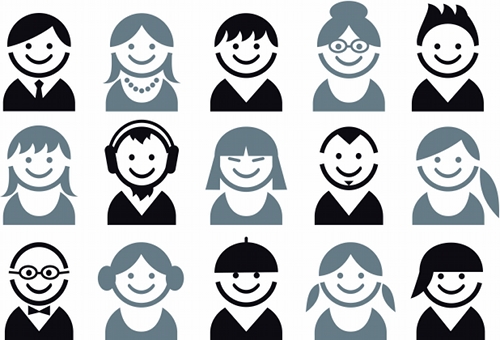Why Brands Should Be Human on Social Media
The success of any social program is ultimately determined by its ability to connect on a one-to-one, human level. But what does it actually mean to be human in social media?
Is it having a fun and engaging brand? Speaking in everyday, colloquial language? Establishing a more relatable — even intentionally non-corporate — online presence?
To an extent, but these are surface symptoms. The core issue lies much deeper, in the nuances of how we interact with one another.
Specifically, there’s a phenomenon in linguistics known as “code-switching.” It refers to when a person alternates back and forth between multiple languages in a single conversation. Recently, a team at NPR dived into this concept, elevating it beyond linguistics and identifying its prevalence and significance on a cultural and sociological level.
One writer, Gene Demby, points out how most of us do this every single day at work. We adopt a corporate tone when speaking to our superiors or coworkers. Then a friend or family member calls and we morph into an entirely different — perhaps even seemingly completely opposite — persona.
The key, though, is that both voices are still inherently us. As Demby writes: “Many of us subtly, reflexively change the way we express ourselves…hop-scotching between different cultural and linguistic spaces and different parts of our own identities – sometimes within a single interaction.”
The implications of this in social media are massive. Social already blurs — and is on the way to obliterating — the line between professional and personal. Combined with our nature to code-switch, that means two huge shifts in how we need to approach social as brands.
Users Don’t Approach Corporate Content Solely as Corporate People
Code-switching not only illuminates the fact that we express various aspects of our personality at different times, but it also reveals that all of these aspects are – at all times – fundamental parts of our makeup. By extension, all of these components of our personality come together to affect our decision-making, preferences, and actions.
In other words, when a user comes across your Twitter handle or Facebook feed, she doesn’t suddenly transform into a “professional-only” mode that consumes, filters and reacts to content based 100% on her company and career.
No, her professional persona may take center stage, but her entire thought process is also influenced by the less apparent parts of her personality: the fact that she’s a parent, enjoys rock climbing, is coming off a rough week or lives in a city.
As marketers, we need to embrace this fundamental nature of user behavior; namely, that people act, engage, and respond not solely as professionals, but as nuanced human beings. Users are not simply — and absolutely cannot be solely treated as — potential sales. Our campaigns, programming and offers must be built to connect with users on that human level — which encompasses, but is not wholly defined by — their professional status.
Learn the Art of Authenticity
Understanding the complexities of code-switching users and the need to connect on a human level doesn’t mean we abandon our marketing objectives, though. We still have businesses to run and revenue to generate. But it does mean we rethink how we communicate and present our brands.
Think about it: If connection needs to take place at a human level, then our brands must also become human. Connection only occurs when there is a convergence between two parties who find something in common. If the user is approaching from a professional-and-personal perspective, and we only approach from a professional one, we’ve already limited how effective our engagement can be.
Being a humanised brand means learning the art of authenticity. It means being genuine, being passionate about whatever it is your brand is and does. Just like in everyday life, people respond most to others who are perceptibly and consistently real. And that’s why it’s an art, not a formula. Authenticity, in the long run, can’t be manufactured or faked.
Every corporation, no matter how buttoned-up, no matter its product or service, has a unique personality. Being human in social media, then, involves identifying all aspects of that personality — even the less obvious or less corporate ones — and embracing them as a whole. From there, the surface symptoms we referenced at the beginning of the column — tone, language, aesthetics — will be easier to define.
The beauty, though, is that there’s always room for a brand’s personality to expand and express itself in new ways. Just as various parts of our individual personalities can evolve, brands can similarly introduce concepts and experiences that reveal more of what they’re passionate about, without deviating from their key values, objectives or principles.
It won’t happen overnight. It may even be painful. But discovering how to be authentic, to be genuine, is an exercise that will only help a business in the long run. At the end of the day, people connect most with real. And social allows us to connect easier and more frequently than ever before, making it the perfect place to start.




